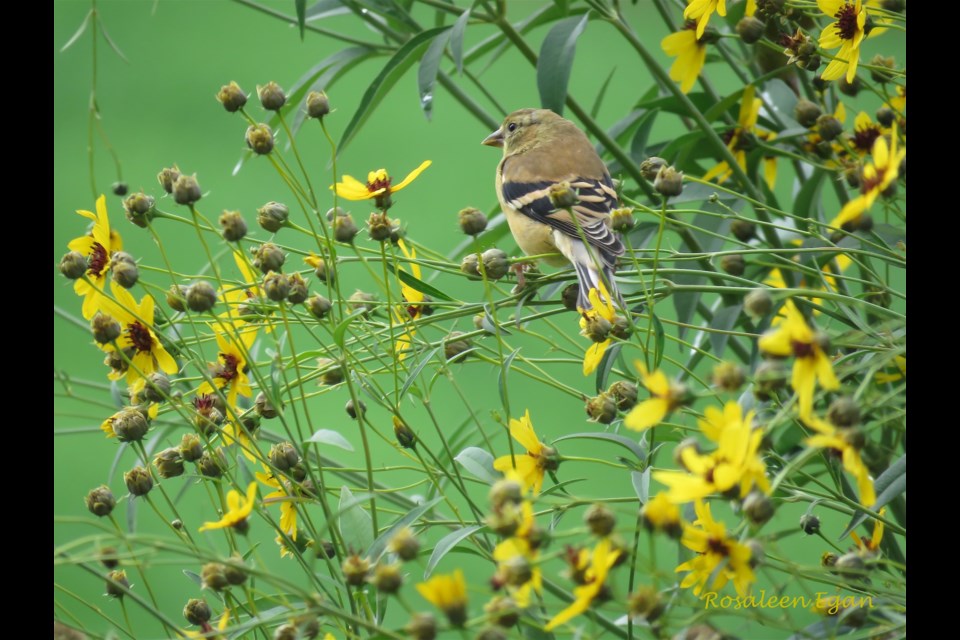As fall begins, thoughts of spring in the garden may bloom.
Many gardeners plant perennials in autumn and many clean up their gardens before winter sets in. At these times, it is beneficial to consider native species of flowers, bushes and trees to beautify a yard, and to attract and support the life of birds, bees, butterflies and beyond in all seasons.
Sunflowers seeded in spring are natural sources of food for birds and a perch in the snowy weather. I leave the seed heads of coneflowers in place for winter interest and as a seed source. Hibernating bugs and other critters enjoy leaves on the ground during the winter.
Last year, I added a garden in the front of my place including more native plants, such as three tall coreopsis. They are now taller than I am. It was with great delight I noticed a couple of weeks ago that they attract American goldfinches. The birds hang on the thin stems and eat the seeds while swaying in the wind.
This week, one particular goldfinch discovered the culinary delight this plant offers right outside the kitchen door. Sometimes, he is barely visible among the stems and co-ordinating golden colour of the flowers.
Yesterday, as I was taking photos out my kitchen window, he appeared and disappeared in my viewfinder. He hung on, eating, as the wind took him up and down and back and forth. It made me think of the nauseating rides at Canada’s Wonderland. Perhaps this was because watching the movement in the viewfinder did indeed make me nauseous. I’m impressed his stomach was able to handle the food/movement combo.
American goldfinches are vegetarians eating seeds from composite plants, including “asteraceae: sunflowers, thistle, asters, etc., grasses, and trees such as alder, birch, western red cedar, and elm. At feeders prefers nyjer and sunflower,” according to allaboutbirds.org. They also like native milkweed. Tall coreopsis (tickseed), where the goldfinch here is hanging out is in the asteraceae family.
Goldfinches nest in late June or early July in eastern North America. They seem to time their young’s arrivals with when the plants they eat have gone to seed, such as thistles. Allaboutbirds.org says: “The female lashes the foundation to supporting branches using spider silk, and makes a downy lining often using the fluffy “pappus” material taken from the same types of seedheads that goldfinches so commonly feed on.”
Goldfinches are widespread in North America. In this area, they are present year round. They may not be readily recognizable as the male’s bright yellow plumage of summer is replaced through molting with a duller, brownish, winter colour. Females’ colours are dull year round. Males actually molt twice a year which is somewhat unusual in the bird world. They can look quite patchy and strange as this process takes place.
They are happy birds to have around. Even their flight has a bounce to it, and it’s fun to see them hang upside down to get at native plant seeds.
Goldfinches are not alone in enjoying native plantings.There are lots of resources that can be found for planting for birds and other wildlife, as well as tips on delaying garden cleanup in consideration of overwintering insects. Just as the molting goldfinch looks patchy and strange, so too may your overwintering garden. Golden moments will come from each.
I share experiences of bird visitors to this property with readers every couple of weeks. Until next time, keep your eye to the sky, and look for birds that may come by.
More resources can be found at:
Lake Simcoe Region Conservation Authority
Toronto and Region Conservation Authority
Rosaleen Egan is a freelance journalist, a storyteller, and a playwright. She blogs on her website at rosiewrites.com.



